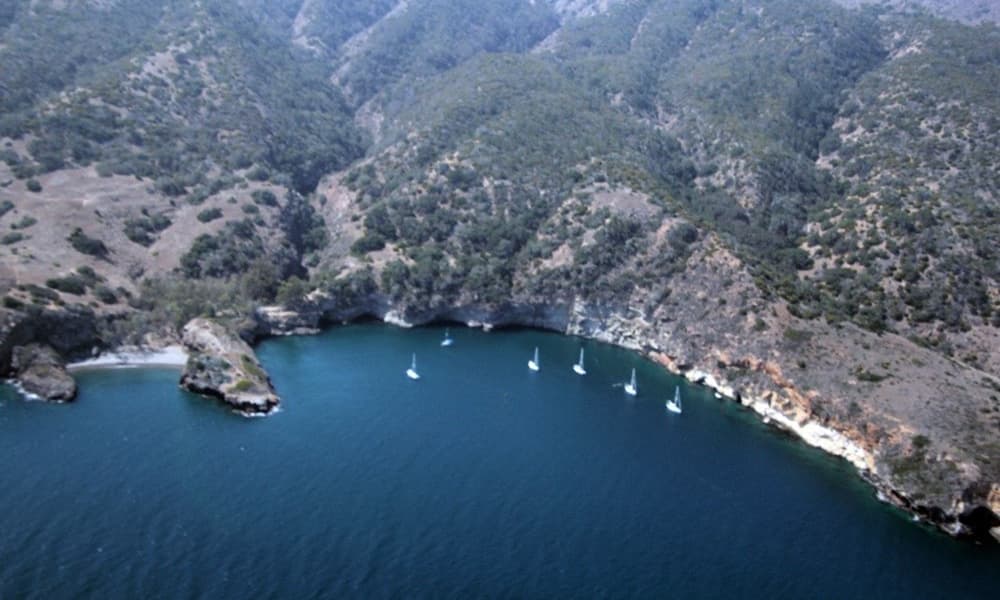Human Use
Conservation Issue

Humans are an integral part of Channel Islands National Marine Sanctuary (CINMS) and belong to the social-ecological system that lies within the sanctuary's boundaries. It is therefore important to characterize and understand the activities of various communities of people who spend time in the sanctuary. This information is essential for identifying the places that are important to different people, making decisions to support sustainable practices, resolving conflicting needs of different user groups, responding to short- and long-term stressors, and supporting the communities and partners that rely on and value these special places. Furthermore, developing a better understanding of who uses the sanctuary and where those individuals obtain information about the sanctuary can enhance our ability to target users with relevant messages.
Description

Many groups of people are connected to and benefit from CINMS. These include those who make a living in the sanctuary, such as fishers and sailors, those who recreate in the sanctuary, such as kayakers, and those who have cultural ties to the sanctuary, like the Chumash people. Obtaining information about how different activities are distributed over space and time is critical for sanctuary management. For example, several activities, such as fishing and scuba diving, are tied to patchily distributed marine resources, including kelp forests and deep-water reefs. Human activities in these areas may exert pressure on sanctuary ecosystems and resources. Human use of the sanctuary may also change based on shifting environmental conditions (e.g., changing ocean conditions, increased wave height, and storm activity). Within the umbrella of sanctuary users, we include people who visit the sanctuary directly, and those who care about the places protected within the sanctuary, but do not personally visit the sanctuary (e.g., many of the Chumash community). We also include those who are unaware of the sanctuary and we seek to understand barriers preventing different groups from accessing, or otherwise benefiting from, the sanctuary. Sanctuary users may be affected by economic drivers (e.g., income levels, fuel prices, tourism trends), cultural drivers (e.g, aesthetic attraction, connection to place, participation in traditional practices), and informational drivers (e.g., social media, news). Information about sanctuary users and partners can help support outreach, education, and the development of programs to make the sanctuary more accessible. New technologies provide expanded opportunities to connect people to the sanctuary remotely, and a deeper understanding of sanctuary users enables effective implementation of such programs.
Data and Analysis Needs
- Demographics, values, preferences, and motivations of those who do and do not use the sanctuary
- Spatial and temporal patterns of sanctuary use by activity and community
- Identification of indicators that can be used to predict human activities
- Information about cultural heritage practices, the resources and conditions needed for the continuation of traditional and local knowledge, and the culturally significant features of the landscape and ecosystem that support these practices
- Estimation of the importance/satisfaction and knowledge, attitudes, values, and perceptions of sanctuary users
- Identification of sources where various user groups obtain information about the sanctuary and connections among networks of sanctuary user communities
- Quantification of human uses using existing and new technologies (e.g., VMS, AIS, radar, satellite images, drone images, passive acoustic monitoring, direct counts, stakeholder surveys)
Potential Products
- Report on demographics of people who come to the sanctuary and barriers for those who are unable to come to the sanctuary
- Dynamic maps and summaries, including interactive graphics, of human use, culturally important spaces, and heritage resources
- Reports, databases, events, and other resources documenting cultural heritage and local ecological and traditional knowledge and practices
- Predictive models and reports of how access to culturally important activities, species, and places would change in the future
Supplementary Information
- Drivers of redistribution of fishing and non-fishing effort after the implementation of a marine protected area network
- Marine Shipping Working Group: Final report
- CINMS 2016 condition report
- Private boating and boater activities in the Channel Islands: A spatial analysis and assessment
For more information about this assessment, contact research.CINMS@noaa.gov

